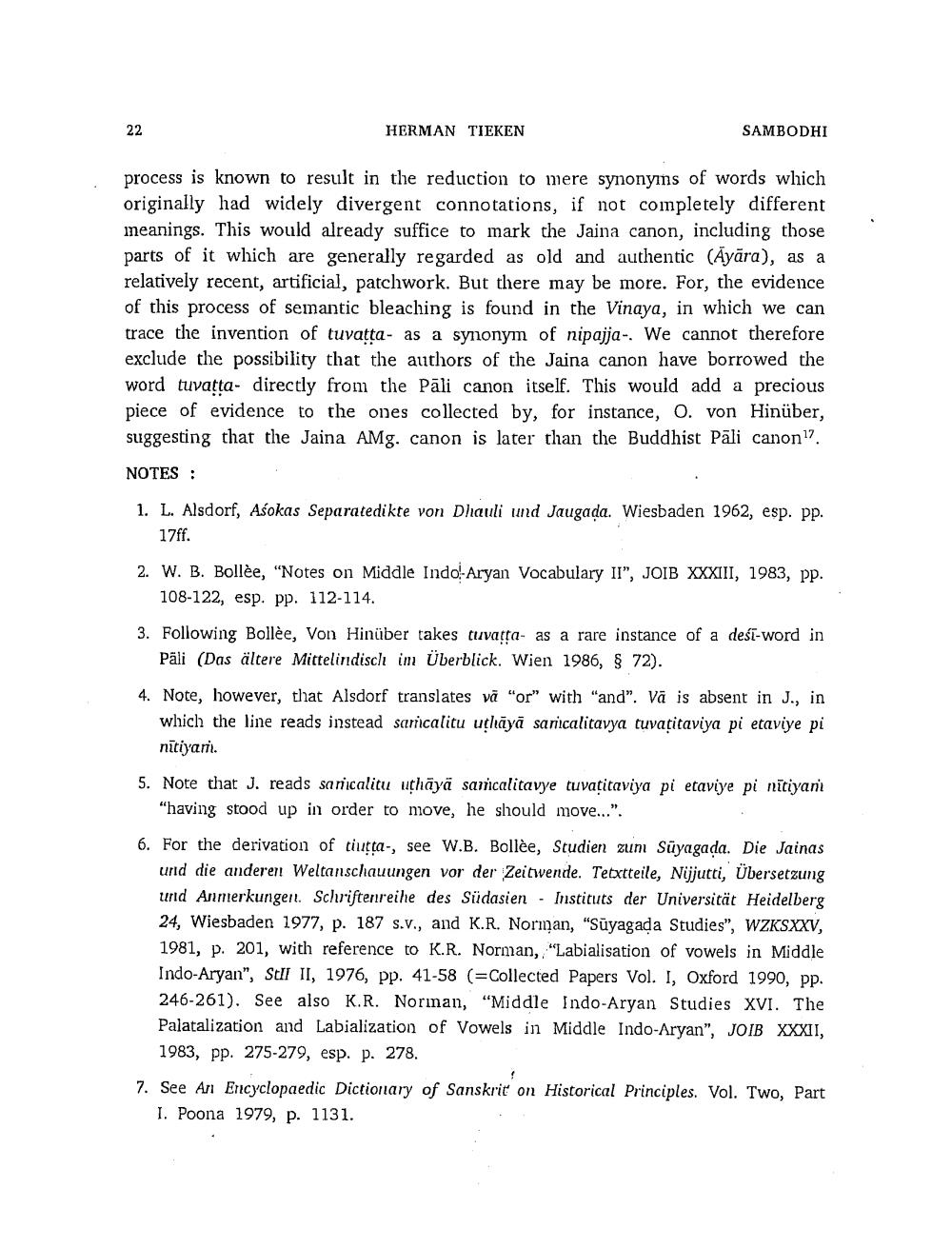________________
HERMAN TIEKEN
SAMBODHI
process is known to result in the reduction to mere synonyms of words which originally had widely divergent connotations, if not completely different meanings. This would already suffice to mark the Jaina canon, including those parts of it which are generally regarded as old and authentic (Āyāra), as a relatively recent, artificial, patchwork. But there may be more. For, the evidence of this process of semantic bleaching is found in the Vinaya, in which we can trace the invention of tuvatta- as a synonym of nipajja-. We cannot therefore exclude the possibility that the authors of the Jaina canon have borrowed the word tuvatta- directly from the Pāli canon itself. This would add a precious piece of evidence to the ones collected by, for instance, O. von Hinüber, suggesting that the Jaina AMg. canon is later than the Buddhist Pāli canon"?
NOTES :
1. L. Alsdorf, Asokas Separatedikte von Dhauli und Jaugada. Wiesbaden 1962, esp. pp.
17ff.
2. W. B. Bollèe, “Notes on Middle Indo-Aryan Vocabulary II”, JOIB XXXIII, 1983, pp.
108-122, esp. pp. 112-114.
3. Following Bollèe, Von Hinüber takes tuvatta- as a rare instance of a desi-word in
Pāli (Das ältere Mittelindisch im Überblick. Wien 1986, § 72).
4. Note, however, that Alsdorf translates vā "or" with "and". Vā is absent in J., in
which the line reads instead sarcalitu uthāyā sarıcalitavya tuvatitaviya pi etaviye pi
nītiyari. 5. Note that J. reads saricalitu uthāyā sarcalitavye tuvatitaviya pi etaviye pi nītiyanı
“having stood up in order to move, he should move...". 6. For the derivation of tiutta-, see W.B. Bollèe, Studien zum Süyagada. Die Jainas
und die anderen Weltanschauungen vor der Zeitwende. Tetxtteile, Nijjutti, Übersetzung und Anmerkungen. Schriftenreihe des Südasien - Instituts der Universität Heidelberg 24, Wiesbaden 1977, p. 187 s.v., and K.R. Norman, "Süyagada Studies", WZKSXXV, 1981, p. 201, with reference to K.R. Norman, "Labialisation of vowels in Middle Indo-Aryan", Sul II, 1976, pp. 41-58 (=Collected Papers Vol. I, Oxford 1990, pp. 246-261). See also K.R. Norinan, "Middle Indo-Aryan Studies XVI. The Palatalization and Labialization of Vowels in Middle Indo-Aryan", JOIB XXXII,
1983, pp. 275-279, esp. p. 278. 7. See An Encyclopaedic Dictionary of Sanskrit on Historical Principles. Vol. Two, Part
I. Poona 1979, p. 1131.




